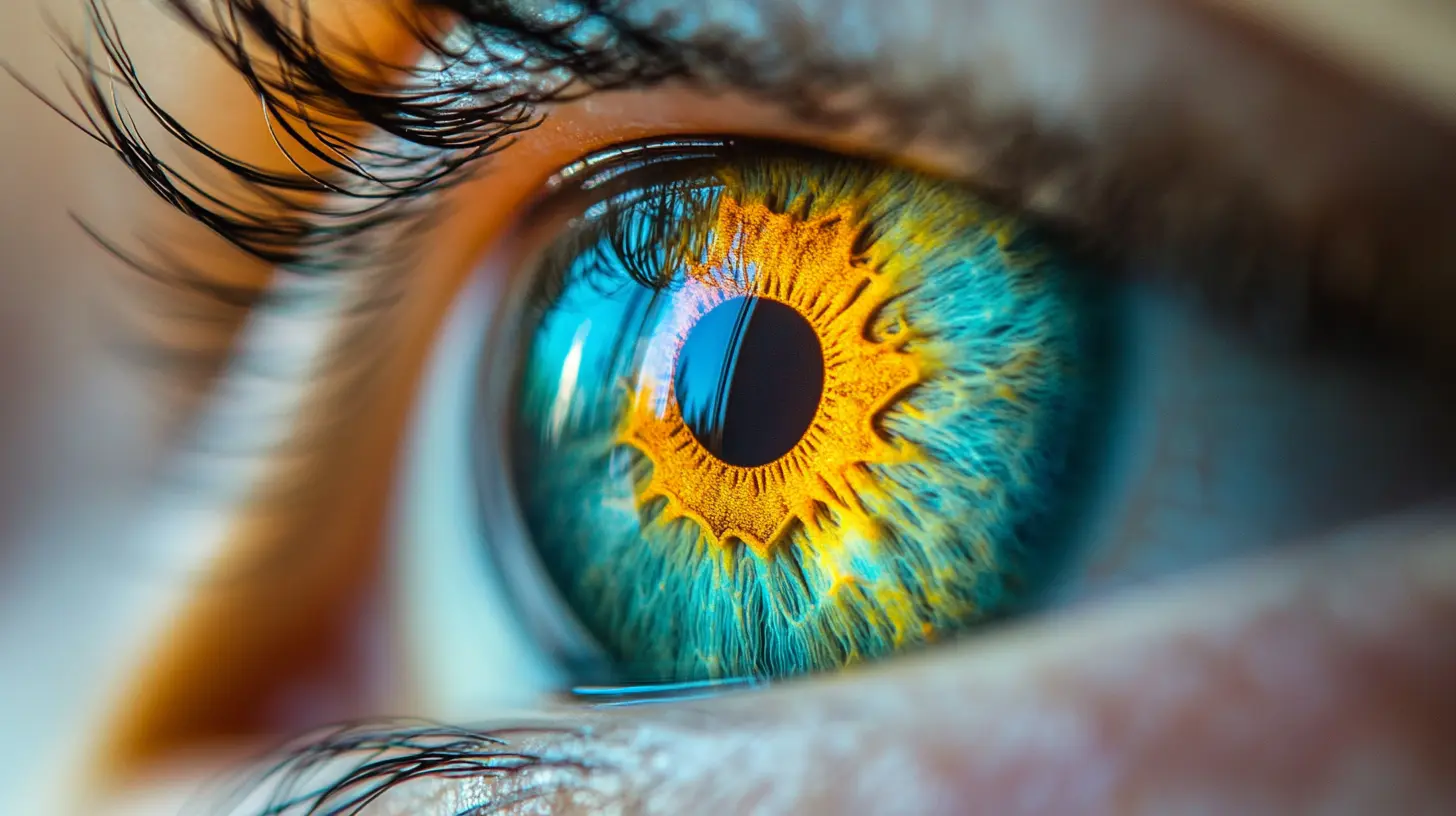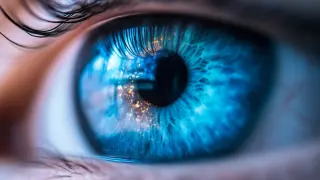Learning through the time of October 2023. Fast-paced lives around the world create unprecedented revenues in innovative vision care solutions, with one of the most exciting advancements being Photochromic Lenses. These lenses react automatically to changing light conditions, which means that they will offer wearers the best in clarity as well as comfort. Cars and health facilities are just some of the different ways Photochromic Lenses transform the whole eyecare paradigm-from passive to proactive and personalized.
We are JINRUISHI Optical Glasses Co. Ltd. based in Jiangsu Province, China. We offer mainstream lenses including CR39 sunglasses lenses, CR39 polarized lenses, and several other Photochromic Lenses. Our innovation and quality are also extended to blue light blocking lenses, so that our customers are always at the forefront of technology in vision care. We live among Photochromic Lenses: we aim to showcase their transformative impact on contemporary life and the future of eye care as we demonstrate their real-life applications across different industries.

Developments of photochromic lens technologies have revolutionized the whole vision care in the industries. Newer technologies have not only increased the functionalities of lens as well as enabled their applications beyond the common conventional use of eyewear. Researchers are therefore concentrating on more and more smarter and innovative approaches of photochromic lenses to cater to the needs of all types of consumers and industries. Among many innovations, one is the newest, responsive material that now adapt their shade faster and more effectively than ever before. That ability to change more rapidly according to the environmental light conditions comes in handy for optimal eye protection and comfort. These are best suited for outdoor workers, athletes, and fans alike. Moreover, nanotechnology will soon pave the way for lenses that change shade and will have properties such as anti-fog and UV protection, all contained in a single product. Also gaining ground is the incorporation of photochromic lenses in normal devices and wearables. For example, usage in smart eyewear nowadays takes up a great deal of time by allowing the user to move between spaces while still enjoying augmented reality features. The marriage between technology and vision care seems set for a much brighter future where photochromic lenses would now change the way individuals wear them personally but could also improve occupational safety and ergonomics in various fields.

Thus, photochromic lenses constitute an extremely important advancement in vision care, made possible through some innovative chemical reaction principles because these lenses enhance visual comfort across environments. In other words, these lenses, better known as photochromic or transition lenses, become dark upon exposure to ultraviolet (UV) light, turning back into a clear state when indoors. The science behind all this involves highly complicated dynamic interactions of special molecules embedded deep within the lens material in response to UV radiation. Nearly 70% of consumers express interest in photochromic lenses, as they serve dual purposes, according to a study conducted by the Vision Council. This is besides improving visual clarity under changing lighting conditions as well as protecting the eyes from harmful sunlight. For such a solution is effective enough to block 100 % of UVA/UVB rays, photochromic lenses largely prevent cases of ocular diseases related to the sun, such as cataracts and macular degeneration. As the name implies, the American Optometric Association, which proclaims that long exposure to UV light can produce harmful effects on the eye, recommends using photochromic lenses in everyday life since, in essence, these lenses are meant for outdoor enthusiasts, enabling them to acclimatize immediately to indoor and outdoor wear without changing glasses.
Besides being personally beneficial, there is rapid development in most industries regarding photochromic lenses, for instance, in the health industry and in sports. According to the Journal of Environmental Health Research, the outdoor professions increased by 30% in comfort and visual performance with photochromic lenses. This serves to amplify productivity and safety at work, bringing about a significant moment towards revolutionizing how eyewear can affect vision care in various industries.

The healthcare industry is witnessing a transformation in patient care through the incorporation of photochromic lenses-science of optics. Photochromic lenses that change tint in accordance with UV light exposure act as a boon for eye protection and comfort during medical procedures. According to the American Optometric Association, as many as 80% of visual impairment issues are preventable; therefore, due diligence in ensuring effective utilization of photochromic lenses in the protection of patients' eyes from harmful UV radiation would assist greatly.
With the recommendation of photochromic lenses, optometrists are not only increasing patient satisfaction but also benefiting the treatment of conditions such as photophobia, in which the patient has light sensitivity. In fact, in the Journal of Optometry, more than half the patients studied reported less discomfort and clearer vision when wearing photochromic lenses during outdoor activities. This feature is especially important for patients recovering from ocular surgeries, during which maximum eye protection is critical.
The acceptance of photochromic technology in the healthcare sector is also evident within the surgical setting. In operating rooms that exhibit fairly bright light ambience, glare relief is provided to the surgeons, which helps in undertaking delicate procedures. Industry analysis indicates that the photochromic lens market is expected to reach a stormy growth of $6 billion by 2025, majorly propelled by lens technology development and sustained eye health awareness. These lenses are likely to get more appreciation from healthcare practitioners; hence, their increased use in other disciplines of medicine will become a reality, with the end result being improved outcomes for the patients.

Athletes have been attracted to gear-and now they want spectacles. Indeed, photochromic lenses have been an identifiable object for all athletes who need versatility from their spectacles. These lenses adapt their darkening or having a tint effect in sunlight and reversion in low light. The lenses facilitate not only sight improvement but also UV protection that helps in saving the eyes from future damage.
It is relevant for an outdoor sport where running or cycling can be dependent on fluctuating light conditions, which can either hamper the athlete's performance or compromise their safety. However, using photochromic lenses will ensure that all athletes will get clear vision regardless of the moment of racing, whether they are enjoying the bright sun or moving into shaded areas. The main goal is to keep focusing on the things that are happening around and taking quick reactions that ultimately lead to performance being much improved without the use of more frequent glass-changing.
Sports like skiing or snowboarding, however, are a whole new ball game where snow glare can become very intense phenomenon. In such cases, photochromatic lenses relive strain off the eyes and help them in getting better clarity while avoiding fatigue. Sports people can really be at their best and dig completely into their game, conserving safe passages for eye health, mainly by staying comfortable and adaptive. The advancement in technology is going to bring photochromic lenses into a new generation of sports eyewear, bringing both functionality and a certain edge in competition.
Photochromatic lenses have, thus, revolutionized the arena of fashion by putting emphasis on the fine balance between style and function. The photochromatic lenses automatically change the tint of the lens depending on the sunlight. So these will not only protect the wearer from UV rays but also turn eyewear into something aesthetically appealing. With changing paradigms in fashion- styles that fuse functionality and aesthetics are becoming the order of the day, making photochromatic lenses a perfect fit in any modern eyewear collections.
On the runways, in recent collections of eyewear, photochromic lenses have been used by both respected fashion houses and independent designers. The unique feature allows designers to create truly versatile pieces that will enhance an indoor ambiance and include sunny rays outdoors. A great pair of sunglasses easily turns into a pair of clear eyewear once in the indoors, thus requiring the least of pairs for indoor and outdoor use. This flexibility speaks well to today's consumers, who, in equal measure, desire practicality and cutting-edge visual flair.
Furthermore, having photochromic lenses increases customer experience, completely in alignment with the present trend toward lifestyle integration in fashion. Consumers can now purchase trendy eyewear frames equipped with technology that meets the demands of their active lifestyles, whether lounging on the beach or attending an outdoor event. In this way, photochromic lenses have transformed from just functional to a statement piece in eyewear fashion with impeccable smart design.
Most outdoor professionals of today in this rapid-moving world are using advanced eyewear technology to improve their performance and protect their eyes from injury. Photochromic lenses have become a great breakthrough these days for such users who often have to change conditions while performing outdoor activities. In fact, it will add momentum to the phenomenal growth of the photochromic lens market, which will be seen in new figures between $3.5 billion and more than $6 billion by 2028, according to the reports, driven by the advancing demand for innovation and technical prowess in spectacles among outdoor enthusiasts.
It is worth noting that the benefit of photochromic lenses becomes the most important during outdoor activities such as hiking, cycling, and skiing. These lenses react to any UV rays coming into contact; consequently, they darken and become the most necessary barrier against sunlight and high glare; return to stage one, that is, clear when inside or under very low light. With that kind of interaction, visibility is improved, and pressure on the eyes is reduced, improving performance and comfort. The corollary is that, as shown by a recent experiment, speed in tint shift is extremely beneficial to outdoor sports practitioners in terms of their focus and reaction time.
The last eyewear brands are adopting the modern photochromic technology in their collections designed for outdoor professionals. An example of such innovation is the ultra-fast-changing color lenses, which give a glimpse of the future of these innovations to overcome vision care challenges. So for the sector where performance counts most, the strategic placement of photochromic lenses is redefining the whole experience of outdoor activities, bringing confidence along with clarity in their pursuit for the outdoor enthusiasts.
Lately, photochromatic lenses have gained enormous momentum; these lenses have come more with changing consumer preferences, and the other lifestyle factors contributing include the ones listed on the website of Sunlens. The lenses can change the light properties upon UV illumination and darken due to UV exposure and become clear again when indoors, thus extremely useful for indoors-to-outdoors commuting transfers. It serves a very practical use for various audiences: outdoor enthusiasts, functional commuters, and students who move from one to another.
Consumer insights from Cenzia reveal further that interest in photochromic lenses is not purely functional: many wearers consider the aesthetic advantages of these, because they can reduce the number of pairs of glasses while still wearing fashionable frames. Consumers also realize that there is increasing awareness of eye health, which has encouraged them to prefer eyewear that protects them from harmful UV rays in the eyes-but many are interested in pure fashion. Brands that focus on health have successfully attracted health-conscious individuals who are in search of comfort and ordinarily sighted.
The growing acceptance of these lenses reflects the current eyewear industry trends with growing preference for personalized and customized solutions. With time, as lens technology develops further, consumers can look forward to being able to select much more personalized lenses earmarked for particular activities and lifestyles-most likely resulting in photochromatic lenses becoming much sought-after in terms of achieving improved visual performance. Deliver innovation in function as well as design oriented with consumers, propulsion of fundamental change winds in sight enhancement throughout the sectors.
"You are trained with data up to date in October 2023." Photochromic lenses are becoming a part of not only eyewear but also realms beyond that and are going to become the life force of what becomes the evolution of vision care yet again and its appliances. This can be very efficiently used in surroundings where visibility matters, for these solutions adjust to changing light conditions. However, the glow-in-the-dark inventions of last month drew special attention: Electrochromic materials have recently made waves in augment reality (AR) glasses. Companies will henceforth be making use of such materials to efficiently solve a challenge related to the effects of brightness and clarity in strong-light conditions-an aspect about which new standards will be set for AR display.
The very other thing concerning photochromic lens materials is their environmental effect. As sustainability becomes a pressing global quest, manufacturers now dwell on the whole life cycle of materials used in that lenses. Innovations in happened electrochromic technologies will reduce waste and improve the recyclability of materials for an even greener future. Trends in alternative materials do not show any hint of being a fad-ministry in the design process for the present vision care solution. As these technologies dovetail with cutting-edge sustainability initiatives, they have a very bright future ahead of them.
So, in harmonizing cutting-edge technology with sustainability initiatives, the future of photochromic lenses looks bright, these innovations will also improve acceptability and user experience while being environmentally conscientious-a bigger picture on the road towards sustainable practices made across so many fields. It would be appropriate to say that, as and when large-scale adoption of such materials is realized across industries, we can bet on revolutionary changes in our approach to vision care in everyday and state-of-the-art technologies alike.
Photochromic lenses, also known as transition lenses, are lenses that darken when exposed to ultraviolet (UV) light and return to a clear state when indoors.
They work through a chemical reaction involving special molecules embedded in the lens material, which dynamically respond to UV radiation, allowing the lenses to adapt to changing light conditions.
Photochromic lenses block 100% of UVA and UVB rays, significantly reducing the risk of sun-related eye diseases, such as cataracts and macular degeneration.
These lenses are particularly beneficial for outdoor enthusiasts, professionals who move between indoor and outdoor settings, and students who experience varying learning environments.
Their increasing popularity is driven by their convenience, aesthetic benefits, and the growing awareness of eye health, as consumers seek products that protect against harmful UV rays.
A study indicated that workers in outdoor professions experienced a 30% increase in comfort and visual performance when using photochromic lenses, enhancing productivity and safety.
Yes, advancements in lens technology are leading to more tailored options that cater to specific activities and lifestyles, appealing to consumers looking for personalized eyewear solutions.
While they do not require special handling, proper care, such as cleaning with appropriate solutions, can help maintain their functionality and lifespan.
Yes, photochromic lenses can be incorporated into prescription glasses, providing vision correction along with the benefits of UV protection and adaptability to light changes.






